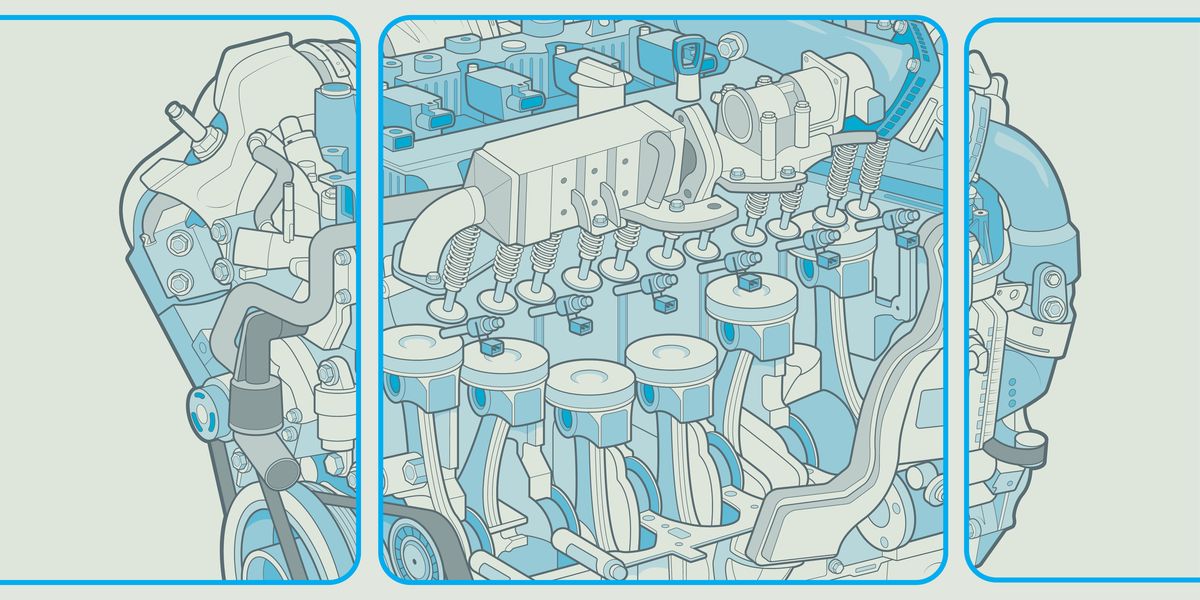Some interesting comments from Mazda in this interview posted today.

 www.roadandtrack.com
www.roadandtrack.com

Why Mazda’s Innovative High-Compression Straight-Six is a Big Deal
Mazda enters the revitalized straight-six game with a fascinating engine running all sorts of neat features. We dive in deep on the CX-90's mill here.
At least in this application, the straight-six is not simply a lengthened version of Mazda's four-cylinder, as the bore and stroke dimensions aren't the same. Still, one imagines there's a lot of commonality between the two engines, because, well, why wouldn't there be?
Jay Chen, powertrain head at Mazda North America Operations, explains the straight-six was the right mill to propel the company’s luxury aspirations. The new rear-drive architecture provided the CX-90 enough length to use a straight-six, and the engine's narrow dimensions also allowed for double-wishbone suspension, the ideal layout for great ride and handling. Chen says the straight-six also allowed more room for crash structure.
Perhaps most notable is the engine’s 12:1 compression ratio, unusually high for a production turbocharged mill. That compression ratio is higher than the 10.5:1 of Mazda's 2.5-liter turbo four and even the 11:1 of BMW's B58 straight-six. Nissan's neat variable-compression turbo engine can run as high as 14:1, but as low as 8:1. Generally speaking, higher compression boosts power and efficiency, though obviously, those increases subject the engine’s components to greater stress overall.
For the CX-90, Mazda offers the 3.3-liter with two outputs. The first produces 280 hp and 332 lb-ft. Turbo S models make 340 hp and 369 lb-ft. From a hardware perspective, the engines are identical. The lower output engine is meant to run on standard 87-octane fuel. As such, the turbo only provides 14.0 psi of boost. (If you put higher-octane fuel in, it won't make a difference). The Turbo S engine requires 93 octane to deliver its full output, running 19.1 psi of boost. If you put 87 in a Turbo S, power output reduces to 319 hp while torque remains the same. Chen says he'd likely run the Turbo S on lower-octane fuel, as the real-world performance differences are insignificant.
Mazda says that despite bucking the trend toward engine downsizing, this relatively big six-cylinder provides better fuel economy at a given torque figure than its smaller-displacement cousins. Generally, a six-cylinder will provide more torque at lower revs than a four-cylinder, so the six isn't working too hard to heft the CX-90 around. Via its variable valve-timing system, this engine can also switch between the traditional Otto and Miller cycles, wherein the intake valve is held open slightly longer during the compression stroke to allow some fuel-air mixture back into the intake manifold. This increases the expansion ratio, the difference in cylinder volume between top dead center versus bottom dead center—essentially the opposite of compression ratio—providing a nice efficiency boost.
This is not the engine’s final form, Chen says. Think of this straight-six as something of a platform unto itself. It was designed with flexibility in mind, so Mazda can tailor its specifications to future products, ones smaller than the CX-90. The CX-70 should soon follow the CX-90. Chen also suggests this engine will end up in a sedan of some sort (just don't call it a Mazda 6).
